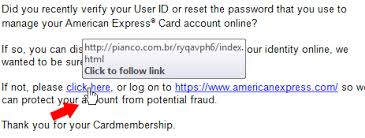Fake and malicious emails get more clever by the day, so here are the 2 easiest ways that anyone can use to diagnose if an email is fake or malicious.
Click the Video above to watch rather than read
The 2 Best Techniques for diagnosing fake or malicious emails
1. Check if the email is coming from the person who is listed as the sender.

Just because someone’s name or email address is listed on the email, it doesn’t mean it actually came from them. Double click on the email address or name listed in the FROM line and see if it lists the person’s actual email address.
Scammers these days will often buy domains that closely resembles the person they’re representing (i.e., a hacker will purchase a misspelled domain like lmesrevices.com so as to evade detection)
2. Hackers sometimes get access to real email addresses, so make sure the link or file they sent you is legit.
The verify where a link is sending you, simply hover over the link without clicking it and it will tell you where it’s going to send. If a link says, “Check out our New Sale Items“, yet it’s sending you to www.russiansgonnahackyou.ru then you can probably deduce some fishy is going on.

For email attachments (things like scanned items, PDFs, spreadsheets and documents), it’s best to avoid opening them and instead drag the file or URL directly from your email and into VirusTotal.com to see if it comes up as malicious.
You can also copy a URL or File into this FREE tool to see if its a virus, https://www.virustotal.com/
You also want to make sure to avoid clicking on a link found WITHIN an email attachment, it is a very common way that scammers use to avoid email security protection.




